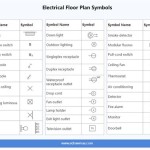Best Houseplants To Grow
Bringing the outdoors in can enhance any living space. Houseplants offer aesthetic appeal, improve air quality, and even provide a calming influence. Choosing the right plants, however, depends on individual lifestyles, available light, and overall home environment. This article explores some of the best houseplants to grow, categorized by ease of care and specific benefits.
Low-Maintenance Champions
For those new to plant parenthood or with limited time for upkeep, these options thrive even with minimal attention:
- Snake Plant (Sansevieria trifasciata): Tolerates low light and infrequent watering. Known for its air-purifying qualities.
- ZZ Plant (Zamioculcas zamiifolia): Extremely drought-tolerant and adaptable to various light conditions.
- Cast Iron Plant (Aspidistra elatior): Lives up to its name by withstanding neglect, low light, and temperature fluctuations.
- Spider Plant (Chlorophytum comosum): Easy to propagate and care for, producing "spiderettes" that dangle from the mother plant.
- Pothos (Epipremnum aureum): A vining plant that thrives in bright, indirect light and tolerates some neglect in watering.
Air Purifying Powerhouses
Certain plants are known for their ability to filter common indoor air pollutants. These options contribute to a healthier home environment:
- Peace Lily (Spathiphyllum): Removes mold spores and VOCs (volatile organic compounds) from the air. Prefers shade and moist soil.
- English Ivy (Hedera helix): Effective at reducing airborne mold and other allergens. Requires bright, indirect light.
- Rubber Plant (Ficus elastica): A low-maintenance choice that filters formaldehyde from the air. Prefers bright, indirect light.
- Bamboo Palm (Chamaedorea seifrizii): Removes benzene, formaldehyde, and trichloroethylene from the air while adding a touch of the tropics to your home.
Pet-Friendly Choices
Introducing plants into a home with pets requires careful consideration. These options are non-toxic to cats and dogs:
- Prayer Plant (Maranta leuconeura): Known for its striking leaf patterns and the way its leaves fold up at night, resembling praying hands. Non-toxic to pets and prefers indirect light.
- Calathea (Calathea species): Offers a variety of colorful foliage and unique leaf movements. Non-toxic to pets and thrives in humid environments.
- Peperomia (Peperomia species): Comes in a wide array of shapes, sizes, and colors, offering plenty of variety. Non-toxic to both cats and dogs.
- Swedish Ivy (Plectranthus verticillatus): A trailing plant that’s easy to care for and safe for pets. Prefers bright, indirect light.
Statement Pieces
These plants can serve as focal points in a room due to their unique size or appearance:
- Fiddle Leaf Fig (Ficus lyrata): Known for its large, sculptural leaves. Requires bright, indirect light and consistent care.
- Monstera Deliciosa (Swiss Cheese Plant): Its iconic split leaves add a dramatic touch to any space. Prefers bright, indirect light and moderate watering.
- Bird of Paradise (Strelitzia reginae): Produces vibrant, bird-like flowers with proper care. Requires bright light and consistent watering.
Compact Choices for Small Spaces
Even small spaces can benefit from the presence of plants. These compact options are ideal for apartments, shelves, or desks:
- African Violet (Saintpaulia ionantha): Produces delicate blooms in various colors and thrives in bright, indirect light.
- Succulents and Cacti: Require minimal watering and come in a variety of interesting shapes and textures.
- Air Plants (Tillandsia): These unique plants don't require soil and can be displayed in a variety of creative ways.
Vining & Hanging Beauties
These plants cascade gracefully from hanging pots, adding a touch of elegance to any room:
- String of Pearls (Senecio rowleyanus): Features unique, bead-like foliage. Prefers bright light and well-draining soil.
- Heartleaf Philodendron (Philodendron hederaceum): A classic vining plant with heart-shaped leaves. Easy to care for and thrives in bright, indirect light.
- English Ivy (Hedera helix): A versatile vine that can be trained to climb or cascade. Prefers bright, indirect light.
Adding Humidity with Tropical Plants
Certain plants naturally increase humidity levels, making them beneficial for dry environments:
- Boston Fern (Nephrolepis exaltata): Known for its lush, feathery fronds. Prefers humid conditions and indirect light.
- Staghorn Fern (Platycerium species): A unique epiphyte that can be mounted on wood or grown in pots. Prefers bright, indirect light and high humidity.
- Areca Palm (Dypsis lutescens): Adds a tropical feel to any space and increases humidity. Prefers bright, indirect light and regular watering.
Selecting the right houseplant enhances the home environment and provides a rewarding experience. By considering individual needs and preferences, anyone can find the perfect plant to thrive in their space. Researching specific plant care requirements ensures long-term success and enjoyment of these natural additions to the home.

24 Best Indoor Plants Find Your Perfect Houseplant Garden Design

Indoor Plants 13 Of The Best House Better Homes And Gardens

24 Best Indoor Plants Find Your Perfect Houseplant Garden Design

16 Best Indoor Plants Easy Houseplants To Grow 2024

25 Of The Best Indoor Plants Bbc Gardeners World

27 Easy Low Light Indoor Plants That Don T Need Much Sun

Plants That Grow In Water A No Fuss Way To Houseplants

25 Best Indoor Plants Low Maintenance To Grow

24 Best Indoor Plants Find Your Perfect Houseplant Garden Design

5 Of The Best Tall Indoor Plants Grow Centre








